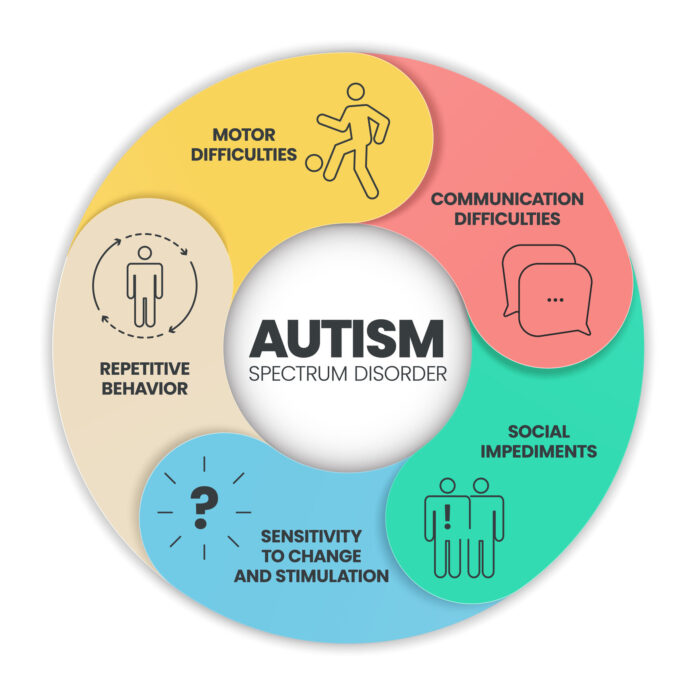Autism Spectrum Disorder (ASD) is a complex neurodevelopmental condition that affects how individuals communicate, behave, and interact with the world. Diagnosing autism involves more than just a simple observation—it requires a structured, multifaceted assessment. By understanding the different autism testing methods, parents, caregivers, and even adults can make more informed decisions about their care journey.
For those considering professional support, comprehensive Autism Testing offers a clearer understanding of behaviors and helps tailor individualized intervention plans.
Why It’s Important to Understand Autism Testing
Many people mistakenly believe that autism can be diagnosed based on a few behaviors alone. In reality, testing involves detailed observation, developmental history, and multiple standardized tools. Understanding how each method contributes to an accurate diagnosis ensures that individuals—children, teens, or adults—get the right help at the right time.
Families often feel more empowered when they understand the different stages and components involved in autism evaluations. This knowledge not only reduces anxiety but also ensures that the results are better understood and acted upon.
Types of Autism Testing Methods
Professionals use a combination of methods to ensure accuracy, especially since autism presents uniquely in every individual. Below are the primary testing methods currently used across age groups.
1. Developmental Screenings
These are brief assessments used in early childhood—often during pediatric visits—to identify any red flags. Pediatricians use checklists or questionnaires to evaluate whether a child is meeting expected developmental milestones.
Common tools include:
- Ages and Stages Questionnaires (ASQ)
- Modified Checklist for Autism in Toddlers (M-CHAT)
These tools help determine if further evaluation is necessary, especially for toddlers not responding to their name or displaying repetitive behaviors.
2. Diagnostic Interviews
If screenings suggest potential signs of ASD, a more thorough evaluation follows. One of the most common tools is the Autism Diagnostic Interview-Revised (ADI-R). This involves a comprehensive conversation with parents or caregivers about the individual’s development, communication, and social behaviors.
Long-tail keywords like “parent interview for autism diagnosis” and “developmental history for autism evaluation” often come into play when people search for what to expect in this step.
3. Behavioral Observation Tools
The Autism Diagnostic Observation Schedule, Second Edition (ADOS-2), is one of the most reliable tools used during direct observation. It includes interactive tasks that help assess communication, play, and social behavior.
This testing method is often used for:
- Nonverbal children
- Teens who mask symptoms
- Adults seeking late diagnosis
It’s considered the gold standard in clinical settings due to its flexibility and accuracy.
4. Cognitive and Language Testing
Because autism can co-exist with other developmental differences, additional assessments are often conducted. Professionals may assess:
- IQ and problem-solving skills
- Receptive and expressive language abilities
- Adaptive functioning (daily living skills)
These help differentiate autism from other neurodevelopmental disorders like ADHD or learning disabilities.
5. Sensory Processing Evaluation
Many individuals with autism have heightened or reduced sensitivity to sensory input. Occupational therapists may use standardized checklists to evaluate sensory processing challenges that affect daily functioning.
This form of testing supports searches like “sensory testing for autism” or “autism and sensory integration therapy.”
Choosing the Right Autism Testing Approach
The choice of method depends on several factors:
- Age of the individual (toddlers require different tools than adults)
- Severity of symptoms
- Communication style (verbal vs. non-verbal)
- Comorbid conditions like ADHD or anxiety
An experienced psychologist or developmental specialist will customize the assessment tools to suit each individual’s needs. It’s not one-size-fits-all, and that’s a good thing.
Benefits of a Structured Autism Assessment
Understanding the full spectrum of autism testing methods helps families recognize the depth of care involved. Here’s how comprehensive assessments benefit individuals and their support systems:
- Accurate diagnosis leads to targeted therapies like speech or behavioral interventions.
- Increased access to services such as IEP plans in schools or workplace accommodations.
- Peace of mind for individuals who have struggled with unidentified challenges.
For teens and adults, understanding their diagnosis may lead to improved mental health and stronger personal relationships.
FAQs About Autism Testing Methods
What age is appropriate for autism testing?
Testing can begin as early as 18 months, but it’s never too late. Adolescents and adults who feel they may be on the spectrum can still undergo testing with tools adapted for their age.
Are all testing methods used for every person?
Not necessarily. A clinical specialist will select tools based on developmental level, language skills, and specific concerns raised by the individual or their caregivers.
How long does the autism testing process take?
It varies. Initial screenings are quick, but full diagnostic evaluations can take several hours or multiple sessions to ensure accuracy.
Is autism testing the same for adults and children?
No, the tools differ. While core symptoms are the same, adults may need more nuanced assessments that consider masking behaviors and co-occurring mental health conditions.
Can schools perform autism testing?
Schools can conduct educational evaluations but typically do not offer a medical diagnosis. For formal diagnoses, private or clinical autism assessments are required.
Final Thoughts on Autism Testing Methods
Autism testing is not a single exam—it’s a series of structured evaluations designed to understand an individual’s developmental, cognitive, behavioral, and sensory profile. Each method plays a unique role in ensuring accurate diagnosis and tailored support.
For parents noticing signs in their child, or adults seeking answers to long-standing challenges, pursuing the right kind of autism testing can be life-changing. With the right guidance and a clear understanding of these methods, individuals can unlock the tools they need to thrive across home, school, and work environments.
Don’t wait for certainty—seek clarity through trusted autism evaluation professionals and embrace the journey toward better understanding and support.



